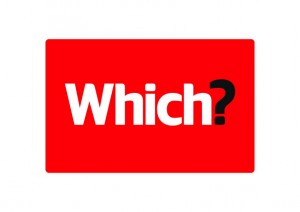Which? Finds Major Variation in Food Safety Standards Across the UK

A new Which? investigation reveals that, a year on from the horsemeat scandal, there is a huge variation in the levels of food standards nationally, with some UK authorities struggling to ensure their local businesses comply with hygiene rules.
The new research has found in some areas of the country more than one in three of high and medium risk food businesses aren’t complying with food hygiene requirements. Work to check food standards, such as the accuracy of food labels, is particularly patchy.
Which? looked at 395 local authorities in the UK and, using the latest data they submit to the Food Standards Agency (FSA), ranked how they are performing on food safety enforcement.
Which? found Bexley in London was the poorest performing local authority, with five other London councils in the bottom 10 (Ealing, Enfield, Harrow, Richmond upon Thames and Southwark). Cherwell District Council in North Oxfordshire was rated as the best performing local authority.
 Which? based its rankings on three criteria: the proportion of premises ranked as high or medium risk in a local authority that were broadly compliant with food hygiene requirements; the percentage of premises yet to receive a risk rating; and the proportion of inspections and other follow ups that were required but not carried out by local authority inspectors.
Which? based its rankings on three criteria: the proportion of premises ranked as high or medium risk in a local authority that were broadly compliant with food hygiene requirements; the percentage of premises yet to receive a risk rating; and the proportion of inspections and other follow ups that were required but not carried out by local authority inspectors.
The FSA data also shows that overall food testing fell by 6.8% from the previous year, continuing a decline, and testing for labelling and presentation fell by 16.2%. No official hygiene sampling was carried out at all by Bexley, Christchurch, Isles of Scilly, Medway, Tamworth and West Lindsey in 2012/13. The number of food standards interventions has also dropped even further, down by 16.8% leaving the potential for further food fraud to slip through the net.
Which? executive director, Richard Lloyd, says: “No one wants another horsemeat fiasco, so it is very worrying that local authority food checks are in decline. We want to see a more strategic approach to food law enforcement that makes the best use of limited resources and responds effectively to the huge challenges facing the food supply chain.”
Which? wants the Government, FSA and local authorities to take action in five areas:
1. A joined up and coherent approach
There needs to be a consumer-focused, joined up approach across policy areas. Responsibility for food labelling and standards policy should be returned to the Food Standards Agency (FSA) and it should ensure there is a system for sharing intelligence and co-ordinating activity across all local authorities.
2. Anticipating threats and problem areas
The FSA needs to work more effectively with local authorities, the food industry, stakeholders as well as the EU and other countries to understand the vulnerabilities of supply chains and anticipate threats in order to help target enforcement resources. More local authority food testing is also needed.
3. More strategic use of resources and expertise
The FSA needs to work with local authorities to ensure effective collaboration and sharing of expertise, ensuring there is adequate expertise to deal with more complex businesses. Costs of inspection should also be recovered from all food businesses.
4. Ensuring independence and prioritising consumer interests
As some councils moves towards privatisation of services and a more collaborative approach is taken between businesses and local authorities, it must be ensured that consumer interests are put first. Inspections should be based on the risk of a business, but backed up with unannounced inspections.
5. Tougher sanctions and incentives for compliance
Penalties must be increased for businesses who don’t comply with the hygiene standards and the FSA must step up its support for local authorities and have the powers to intervene in complex and national cases. It should be mandatory for all business across the UK to display of food hygiene ratings should be and all local authorities should be required to be part of the national schemes.


































